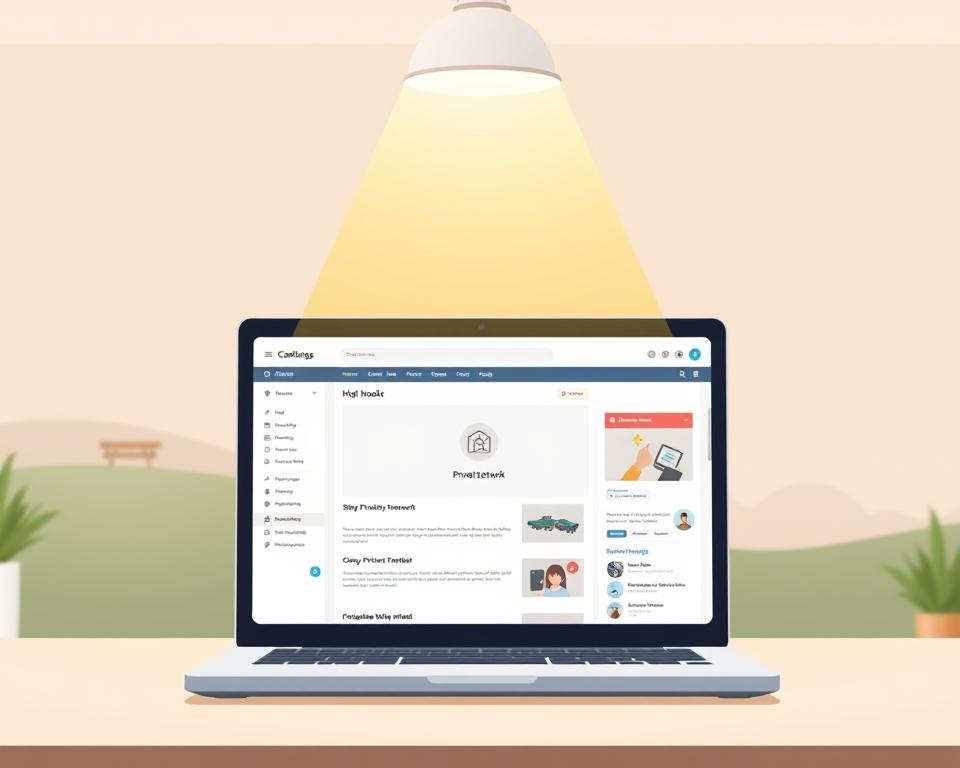Private Blog Network Backlink Guide
Did you realize almost 60% of SEO experts have employed PBN links? The appeal of a Private Blog Network (PBN) is its power to boost a website’s authority. Consequently, search engines may reward you with improved rankings. Yet, what truly defines a Private Blog Network in the SEO world? It might seem like a quick way to climb the ranks, yet using PBN SEO services poses significant risks. These include severe penalties from Google. Let’s explore PBN for SEO basics and why so many in SEO find them irresistible.
Defining a PBN
Essentially, a PBN is a cluster of blogs designed to funnel link juice to a primary domain. This method aims to increase search engine visibility by passing link equity from these sites to the primary one. Many PBNs use expired domains, which retain some authority, to create a credible facade for search engines like Google.
What drives a PBN is simple. Marketers employ them to amplify their digital footprint. They do this by:
- Securing high-value links that elevate SERP standings.
- Dictating anchor text and placement for optimal relevance.
- Fostering a web of sites that exchange links in a natural-looking manner.

How do Private Blog Network Links Work?
They function by simulating organic endorsements through private blog network backlinks. Each PBN link is engineered to deceive crawlers into thinking it’s a genuine vote of confidence.
The process involves carefully chosen keywords and domains within a network of blogs. Rapid uplift comes hand in hand with steep penalty prospects.
To be effective, backlinks must appear natural, with relevant content around them.
The Advantages of Using Private Blog Networks
The chief allure of PBNs lies in their backlink control. PBNs let you dictate exactly how, where, and when your links appear.
Expired domains give you a head start on link authority.
They empower you to weave keyword-optimized anchors across your network.
The Risks Associated with Private Blog Networks
Yet, these tactics are fraught with peril. Primary among these is the threat of manual or algorithmic penalties from Google.
PBN vs. Outreach
In the competitive world of SEO, professionals often face challenges with traditional link-building strategies. They promise speed and predictability in link acquisition.
Best Practices for Managing PBNs
Avoiding footprints is critical in PBN upkeep. Begin with thorough due diligence when purchasing expired domains.
Identifying PBN Links on Your Website
Use tools like Semrush or Ahrefs to trace suspicious links.
| Indicators of PBN Links | Description |
|---|---|
| Low-Quality Domains | Links from domains with poor authority or less than optimal rankings. |
| Irrelevant Content | Links embedded in content that does not match your site’s niche. |
| Suspicious Anchor Text | Repetitive or irrelevant anchor text patterns. |
| Thematic Similarity | Lack of a coherent theme among linking pages and domains. |
How to Disavow Private Blog Network Links
- Identify harmful PBN backlinks through thorough analysis.
- Create a disavow file correctly, listing specific URLs or domains to disavow.
- Upload the disavow file to Google Search Console.
Alternatives to Private Blog Networks
Exploring ethical link building strategies offers valuable alternatives to utilizing Private Blog Networks (PBNs). Guest blogging is a prominent option.
Clearing Up PBN Myths
Many assume PBNs are risk-free quick fixes.
Future of Private Blog Networks in SEO
| Factor | PBNs | Future SEO Practices |
|---|---|---|
| Content Quality | Low emphasis on genuine content | High emphasis on high-quality, valuable content |
| Risk Factor | High risk of penalties | Lower risk with authentic practices |
| User Engagement | Limited engagement | Enhanced user interaction and loyalty |
| Sustainability | Unsustainable in the long term | Focus on sustainable growth |
Bringing It All Together
However, the pitfalls and penalties often outweigh the benefits.